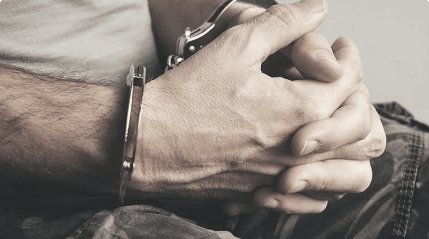Home » New York City Personal Injury Lawyer » New York City Truck Accident Lawyer
- Why choose the commercial truck accident lawyers at Proner & Proner?
- Who is liable for New York City truck accidents?
- What Our Clients Says
- How much is my commercial truck accident case worth?
- Common Causes of Truck Accidents
- Types of Truck Accidents in New York
- Get Advice From An Experienced Truck Accident Lawyer
- Common Injuries in Truck Accidents
- How the Best Truck Accident Attorneys Handle Truck Accidents
- Frequently Asked Questions About New York Truck Accidents
- How Proner & Proner Can Help
New York City drivers experienced 612 truck accidents in November 2022 alone, according to the New York City Police Department, with the highest occurrences in Brooklyn and Queens.
Large commercial trucks have the potential to cause catastrophic harm in accidents due to their substantial size and weight.
Commercial vehicles are governed by state and federal laws to reduce the risk of accidents and protect the public from harm. Drivers and companies owe the public a duty to abide by these standards.
When trucking companies or drivers fail to take their responsibilities seriously, they unjustly risk the lives of all drivers. The New York truck accident lawyers at Proner & Proner are dedicated to holding trucking companies and their drivers accountable when their negligence harms others.
Why choose truck accident lawyers at Proner & Proner?
Proner & Proner was founded in 1958 by A. Stanley Proner on the premise that success would come from putting clients’ needs first. More than six decades later, his son Mitchell continues this tradition.
Mitchell Proner is a talented attorney who has achieved record results for his clients and regularly appears on local, national, and international news to provide insight and commentary on legal issues. He is frequently called upon to lecture and mentor other attorneys and has received such honors as the following:
- Top 100 Trial Lawyers, American Trial Lawyers Association
- Lifetime Membership, Multi-Million Dollar Advocates Forum
- Preeminent rating for ethics and advocacy skills, Martindale-Hubbell
Our firm often receives feedback such as the following from our satisfied clients:
“This law firm is amazing!!! They provided me with constant updates regarding my case. Everyone that I spoke to was professional and kind. All of them were very knowledgeable in their areas of expertise, and I felt they truly cared about my case. The benefit that they provided for me truly changed my life for the best. I am forever grateful.” —Kenneth Powell
When you retain Proner & Proner, you have access to our legal team at all times. You will also receive Mitchell Proner’s personal cell phone number and an invitation to call him anytime.
“It’s our dedication to meeting our clients’ needs that makes us different. The insurance carriers—they know that we have the assets and the wherewithal and the fortitude to see a case through to the end.” —Mitchell Proner
Who is liable for New York City truck accidents?
Liability in a truck accident is an important factor in determining case value. The NYC truck accident lawyers at Proner & Proner will investigate your accident to establish all the contributing causes and liable parties. We may find one or more of the following people or entities liable for your accident:
- The driver
- The trucking company
- An employee who loaded cargo improperly
- The city of New York City
- A manufacturer of defective tires or truck components
- A negligent truck mechanic
Vicarious Liability
New York vehicle owners are vicariously liable for the negligence of anyone driving their vehicles with their permission, including truck drivers they employ.
Self-employed truck drivers are known as owner-operators. These drivers are business owners that provide services to customers rather than employers. If you are involved in an accident with one of these truckers, holding the company accountable can be more challenging.
Related Pages
New York Office
122 E. 42nd St #2015, New York, NY 10168
Email: info@prolaw1.com
Phone: (212) 986-3030
Successful Cases
$6,900,000.00
Female, Male: Premises Liability
$3,500,000.00
Female, 43: Premises Liability
$3,500,000.00
Female, 33: Serious Personal Injury
Testimonials
Got into a motorcycle accident and went to Proner&Proner. I received great services and excellent results, I would definitively recommend the services. It was a great experience for me, A++ attorneys.
– GOOGLE REVIEWER / CLIENT
When I felt I needed legal support after a motorcycle accident, I sought out an attorney who was a motorcyclist as well. Fortunately, I found Mr. Proner. The concern I received was a comfort. The firm’s contact with me while working on my behalf was reassuring and the results certainly made a bad experience easier to put behind me. My gratitude to Proner & Proner.
– GOOGLE REVIEWER / CLIENT
Mitchell Proner is an amazing and very experienced trial lawyer, who takes care of his clients. He represented me in a car accident case, kept me very informed during the lengthy legal process and got me the settlement that I expected. His friendly office staff was always willing to assist and answer any questions I had. I recommend Mitchell Proner to all my friends and family!
– GOOGLE REVIEWER / CLIENT
I am very grateful for the services they were very quick and they dealt with my case right away. Thank you very much.
– GOOGLE REVIEWER / CLIENT
Mitchell Proner is an excellent lawyer. He took our case and did the right thing. We recommend him 100% to anyone. His staff are professionals and they care about their clients.
– GOOGLE REVIEWER / CLIENT
Greatest Lawyers I ever had. Answer any and every question I ever had. They treated me as one of the family. I can’t say enough about this firm. Thank you so much for all you guys did.
– GOOGLE REVIEWER / CLIENT
Awesome experience, excellent service, very professional and fast resolving my case. My number one attorney – definitely recommended more than once. Thank you!
– GOOGLE REVIEWER / CLIENT
What Our Clients Says
Here are some of our clients’ testimonial videos
How much is my commercial truck accident case worth?
The value of a truck accident case depends on multiple factors:
- The severity of your injuries
- The extent of your medical treatment
- Your lost wages
- The length of time before you may return to your previous earning level
- The degree of your pain and suffering
- Who is liable for your injuries
- The available insurance and/or assets of the defendants
Compensation after a truck accident typically comes from insurance companies. New York’s insurance laws require injured drivers to claim benefits from their own no-fault insurance regardless of fault.
If your injuries meet New York’s definition of serious, you have the right to file a claim for benefits from the truck driver’s liability insurance policy.
Types of Damages Victims Can Recover
Liability insurance pays claimants economic and non-economic damages, while no-fault insurance covers economic damages only. These damages are meant to compensate victims for their monetary and non-monetary losses. Punitive damages may also be available in some cases, but they are not covered by insurance.
Economic Damages
Economic damages are the quantifiable monetary losses that stem from your accident. These damages include property damage, medical expenses, and lost wages.
Medical expenses include:
- Emergency treatment
- Diagnostic testing and procedures
- Surgery
- Injections
- Travel to treatment
- Medical supplies and equipment
- Doctor visits
- Home health
- Projected future medical costs
Lost wages are income losses from being unable to work as a result of your injuries, including the following:
- Missed days at work
- Loss of earning capacity
- Lost business opportunities
- Lost job benefits
- The value of domestic services you can no longer provide
Non-Economic Damages
Non-economic damages are the non-monetary damages related to your quality of life. These damages may include the following:
- Pain and suffering
- Loss of capacity to enjoy life
- Loss of society
- Loss of consortium
- Disfigurement
- Mental anguish
Some states limit the non-economic damages you can recover, but New York does not impose such limits.
Punitive Damages
Punitive damages are awarded in rare cases when your attorney can prove that the conduct of the defendant was blatantly reckless or malicious. For example, punitive damages may be awarded if the truck driver caused the accident while drinking and driving.
Punitive damages are not available in cases that settle. They must be awarded by a jury. The purpose is to punish the defendant and deter others from similar conduct.
Wrongful Death Damages
In the tragic death of a family member in a truck accident, your loved one’s personal representative may file a survival action or wrongful death lawsuit and collect such damages as the following on behalf of the family:
- Burial and funeral expenses
- Medical expenses of the deceased
- Pain and suffering of the deceased
- Loss of companionship
- Loss of guidance, support, or comfort
- Lost income of the deceased
Common Causes of Truck Accidents
According to the Federal Motor Carrier Safety Administration (FMCSA), the three most common critical events when the truck driver was at fault include the following:
- The truck leaving its lane
- The truck driver losing control of the vehicle
- The truck rear-ending another vehicle
When investigating the contributing factors in these accidents, the FMCSA found that truck driver error was the most common contributing factor.
Truck Driver Error
- Driving under the influence of legal or illegal drugs or alcohol
- Traveling too fast for conditions
- Unfamiliarity with the roadway
- Fatigue
- Pressure from the carrier
- Illegal maneuver
- Inattentive or distracted driving
- Following too closely
Other Factors
- Brake problems
- Road conditions
- Tire problems
- Cargo shift
Truck driver fatigue is a significant concern impacting road safety around truck drivers. Federal laws limiting truckers’ work hours still allow drivers to work 14-hour days with 11 hours of driving time, with 70-hour work weeks. Some companies pressure their drivers to exceed these limits.
The Department of Transportation has acknowledged that long hours have been associated with an increase in the risk of crashes. The FMCSA also identified poor truck driver training as a contributing factor in overall accident risk. Both of these situations can result in the trucking company incurring liability.
Types of Truck Accidents in New York
Crashes that may result in minor injuries when two passenger vehicles are involved can be deadly when one is a large truck, particularly for occupants of the passenger vehicle. Common truck accidents include the following:
- T-bone truck accidents
- Rollovers
- Jackknives
- Wide-turn truck accidents
- Rear-endings
- Sideswipes
- Underride accidents
Underride truck accidents occur when a vehicle is caught underneath the truck. This often occurs during sideswipe accidents because the guards on most trucks are not strong enough to prevent the vehicle from sliding underneath and getting caught. The results are often fatal and gruesome.
While a rear-ending may seem like a minor accident, when a tractor-trailer rear-ends a passenger vehicle, the results can be deadly. If this occurs at an intersection, the vehicle is likely to be pushed into the intersection and struck by multiple vehicles.
Get Advice From An Experienced Truck Accident Lawyer
Common Injuries in Truck Accidents
Truck accidents may result in the following catastrophic injuries:
- Severe burns
- Decapitation
- Crushing injuries
- Traumatic brain injuries
- Spinal cord injuries
- Multiple broken bones
- Organ damage
How the Best Truck Accident Attorneys Handle Truck Accidents
The best truck accident lawyers are skillful trial lawyers who put insurance companies on notice that they must pay for the negligence of their clients or face a trial. If you find an attorney who settles all their cases, the attorney may not have the confidence and resources to try your case in court.
At Proner & Proner, we successfully settle most cases outside of court, but we are always prepared to go to court against any insurance company that refuses to pay a reasonable settlement.
Frequently Asked Questions About New York Truck Accidents
The statute of limitations for most personal injury cases in New York is three years from the date of injury or two years from the date of death in wrongful death cases. However, it is important not to wait to contact an attorney.
You must file your insurance claim within 30 days of the accident for a private commercial vehicle or 90 days for a city vehicle, according to New York insurance laws. Your attorney will need access to evidence and witnesses before evidence is lost or details are forgotten.
New York truck accident attorneys typically charge a contingency fee, which means you pay nothing up front. When you win your case and collect money, the attorney generally collects one-third of the compensation, and the client receives two-thirds.
This ensures clients have access to the most talented attorneys for their personal injury claims, regardless of their financial situation.
How Proner & Proner Can Help
When you retain a New York City truck accident attorney at Proner & Proner, you can count on our law firm to put your needs first and fight for your case until its completion. We treat our clients like family—with compassion, empathy, and respect.
We accept all types of commercial motor vehicle accident cases in New York City, including accidents involving the following:
- Tractor trailers
- Buses
- Dump trucks
- Cement trucks
- Limousines
- Uber or Lyft
- Delivery vehicles
We are located in Manhattan, but we accept cases in all five of New York’s boroughs, including the Bronx, Brooklyn, Queens, and Staten Island, as well as Long Island and the surrounding areas.
If you or your loved one has been injured in a truck accident, contact us today to schedule a free consultation.

In The Press



Office Location
Even though the firm has successfully represented clients from five continents and over 30 jurisdictions, Proner & Proner serves New York personal injury clients in all five boroughs from our office in Midtown Manhattan.

